Search the Special Collections and Archives Portal
Search Results
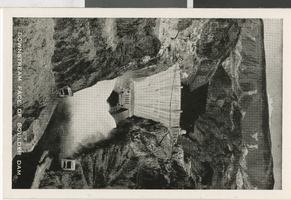
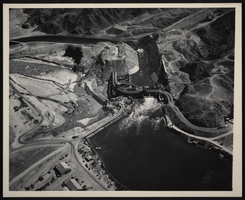
Photograph of Parker Dam, circa 1938-1940s
Date
1938 to 1949
Archival Collection
Description
An image of Parker Dam on the Colorado River at the California-Arizona border, 155 miles downstream from Hoover Dam. Parker Dam is commonly referred to as "the deepest dam in the world" because 73% of the dam's structural height is positioned below the original river bed. Note: Boulder Dam was officially renamed Hoover Dam in 1947.
Image
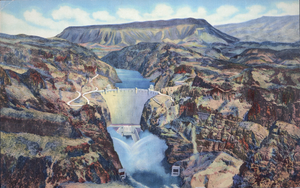
Postcard showing Hoover Dam, circa 1930s-1940s
Date
1930 to 1949
Archival Collection
Description
A colored postcard showing an artist's representation of Boulder Dam, later known as Hoover Dam, in Black Canyon, with Fortification Mountain lying in background. From this angle, intake towers can be seen sticking out of Lake Mead, along with the U-shaped power house at the base of the dam.
Image
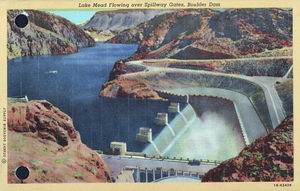
Postcard showing Hoover Dam, circa 1930s-1940s
Date
1930 to 1949
Archival Collection
Description
A colored postcard showing an artist's representation of water flowing over the spillway gates from Lake Mead into Hoover Dam, previously known as Boulder Dam, in Black Canyon. Transcribed onto the top border of the image: "Lake Mead Flowing over Spillway Gates, Boulder Dam."
Image
Hoover Dam
Level of Description
File
Archival Collection
Dorothy Dorothy Photograph Collection
To request this item in person:
Collection Number: PH-00131
Collection Name: Dorothy Dorothy Photograph Collection
Box/Folder: N/A
Collection Name: Dorothy Dorothy Photograph Collection
Box/Folder: N/A
Archival Component
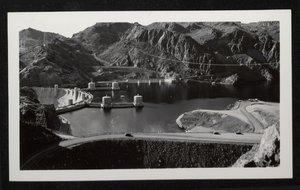
Photograph of Hoover Dam, circa 1935
Date
1935
Archival Collection
Description
An Arizona side view of Lake Mead filled at Hoover Dam.
Image
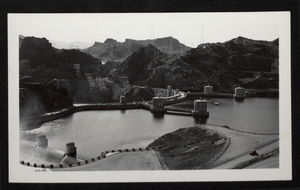
Photograph of Hoover Dam, circa 1935
Date
1935
Archival Collection
Description
An Arizona side view of Lake Mead filled at Hoover Dam.
Image
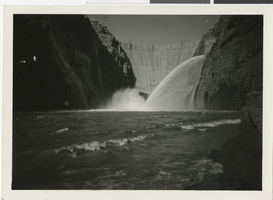
Photograph of the Hoover Dam, circa 1936
Date
1935 to 1937
Archival Collection
Description
An aerial, downstream view of the completed Hoover Dam.
Image
Dams and salinity
Level of Description
File
Archival Collection
Colorado River Commission of Nevada Reference Library Collection
To request this item in person:
Collection Number: MS-00427
Collection Name: Colorado River Commission of Nevada Reference Library Collection
Box/Folder: N/A
Collection Name: Colorado River Commission of Nevada Reference Library Collection
Box/Folder: N/A
Archival Component
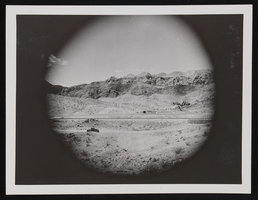
Hoover Dam area: photographic print
Date
1930 (year uncertain) to 1933 (year uncertain)
Archival Collection
Description
Pinhole view of the Hoover Dam area looking west. The U.S. Construction Railroad and the Black Canyon highway is depicted in the foreground of the photograph.
Image
Pagination
Refine my results
Content Type
Creator or Contributor
Subject
Archival Collection
Digital Project
Resource Type
Year
Material Type
Place
Language
Records Classification
